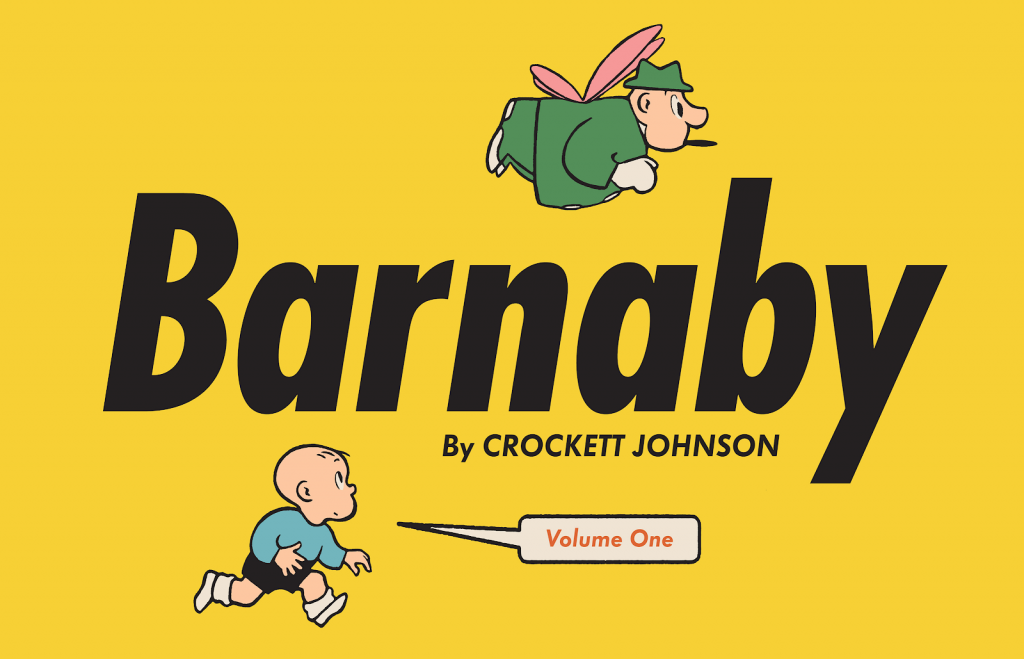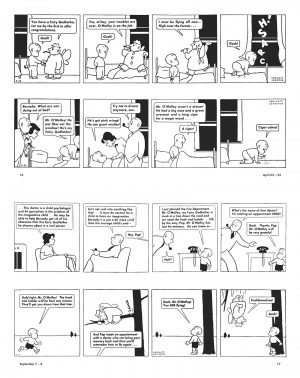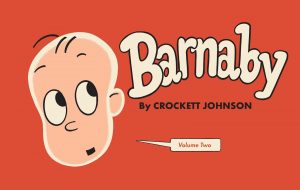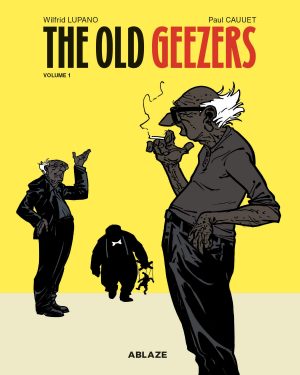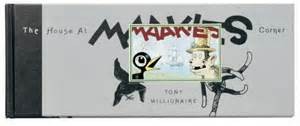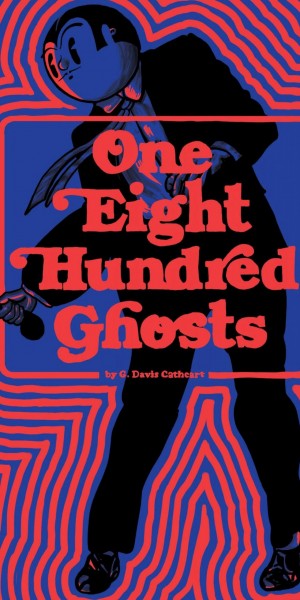Review by Win Wiacek
Barnaby is one of the most wonderful strips of all time and this superb hardcover compilation supplies lots of fascinating extras. If you harbour any yearnings for the lost joys of childish glee and simpler, more clear-cut world-ending crises, you would be crazy to miss this book.
Today’s newspapers have precious few continuity drama or adventure strips. Indeed, if a paper has any strips, as opposed to single panel editorial cartoons, chances are they will be of the episodic variety typified by Garfield or Dilbert – or reruns of old favourites like Calvin and Hobbes or Peanuts. Most of these are a set-up, delivery and punch-line, rendered in sparse, pared-down-to-basics drawing style. In that they’re nothing new. Narrative impetus comes from the unchanging characters themselves, and a building of gag-upon-gag in extended themes. The advantage to the newspaper was obvious. If readers liked a strip it encouraged them to buy the paper. If one missed a day or two, they could return fresh at any time having, in real terms, missed nothing. Barnaby in so many ways bridges the gap between then and now.
On April 20th 1942 a new, sweet strip for kids arrived, whimsically addicting, socially seditious and a ferociously smart satire. The outlandish four-panel daily was the brainchild of a man who didn’t particularly care for comics, but who – according to celebrated strip historian Ron Goulart – just wanted steady employment. Meet Crockett Johnson, ardent socialist, passionate anti-fascist, gifted artisan and brilliant designer.
Not since George Herriman’s Krazy Kat had a scrap of popular culture so infiltrated the halls of the mighty, whilst largely passing way over the heads of the masses. Over a ten year run to February 1952 Barnaby was only syndicated to 64 papers nationally, with a combined circulation of just over five and a half million, but it kept Johnson in relative comfort.
Barnaby Baxter is four, smart, ingenuous and scrupulously honest, whose ardent wish is to be an Air Raid Warden like his dad. Instead he is “adopted” by a short, portly, pompous, mildly unsavoury and wholly discreditable windbag with pink wings when he wishes one night for a Fairy Godmother.
Jackeen J. O’Malley, card carrying-member of the “Elves, Gnomes, Leprechauns and Little Men’s Chowder and Marching Society” – although he hasn’t paid his dues in years – installs himself. A lazier, more self-aggrandizing, mooching old glutton and probable soak could not be found anywhere. Despite looking like a fraud – he never uses his magic and always wields one of Dad’s stolen cigars as a substitute wand – O’Malley is the real deal: he’s just incredibly lazy, greedy, arrogant and inept.
In fact, this entire glorious confection is about our relationship to imagination. This is not a strip about childhood fantasy. The theme here, beloved by both parents and children alike, is that grown-ups don’t listen to kids enough, and that they certainly don’t know everything.
Raucous, riotous sublimely surreal and adorably absurd, the untrammelled, razor-sharp whimsy of the strip is instantly captivating, and the laconic charm of the writing well-nigh irresistible, but the lasting legacy of this ground-breaking feature is the clean, sparse line-work that reduces images to almost technical drawings: unwavering line-weights and solid swathes of black that define space and depth by practically eliminating it, without ever obscuring the fluid warmth and humanity of the characters. Almost every modern strip cartoon follows the principles laid down here by a man who purportedly disliked the medium.
This essential collection takes the strip to 1944, with more genius to follow in Volume Two.
